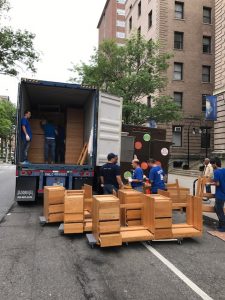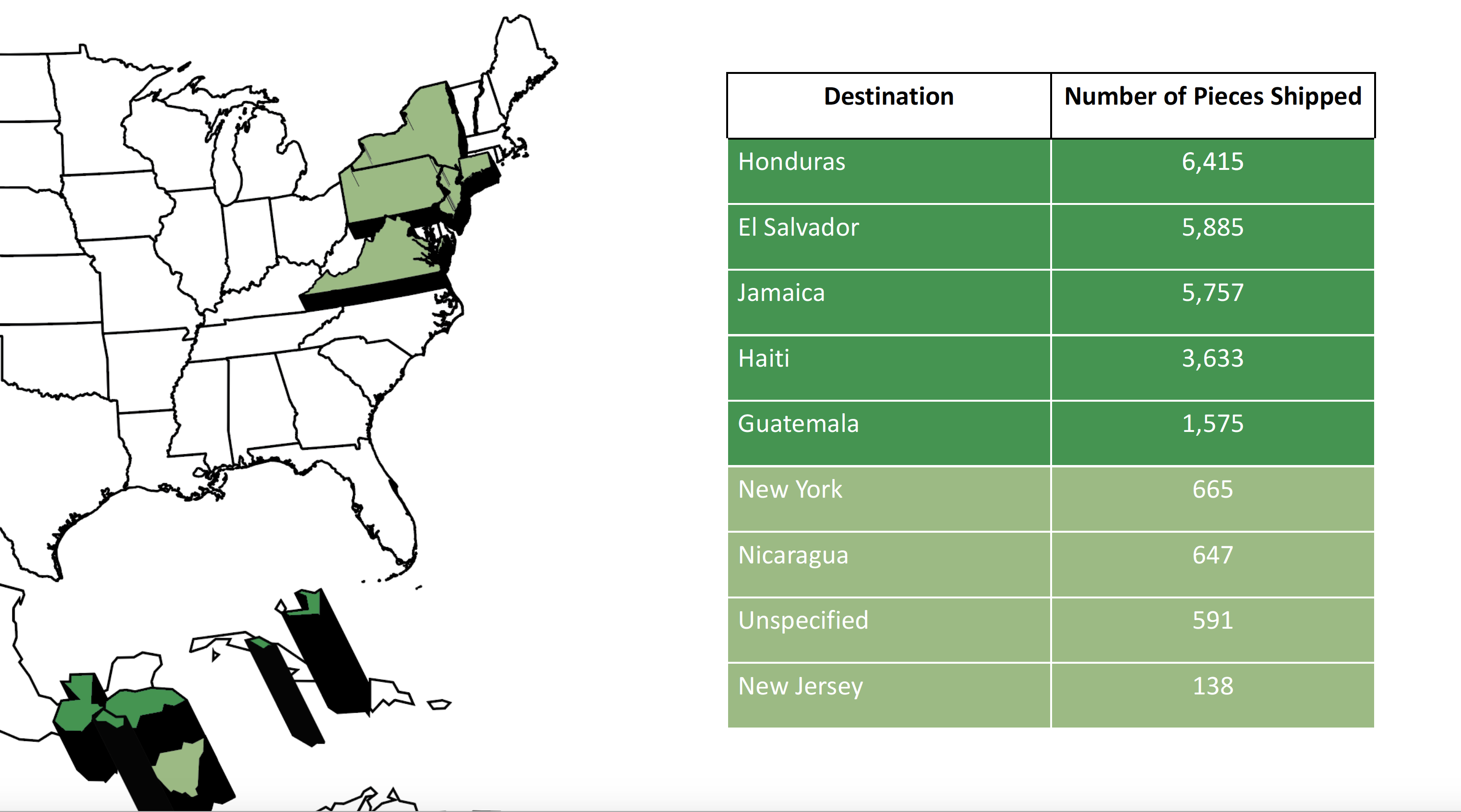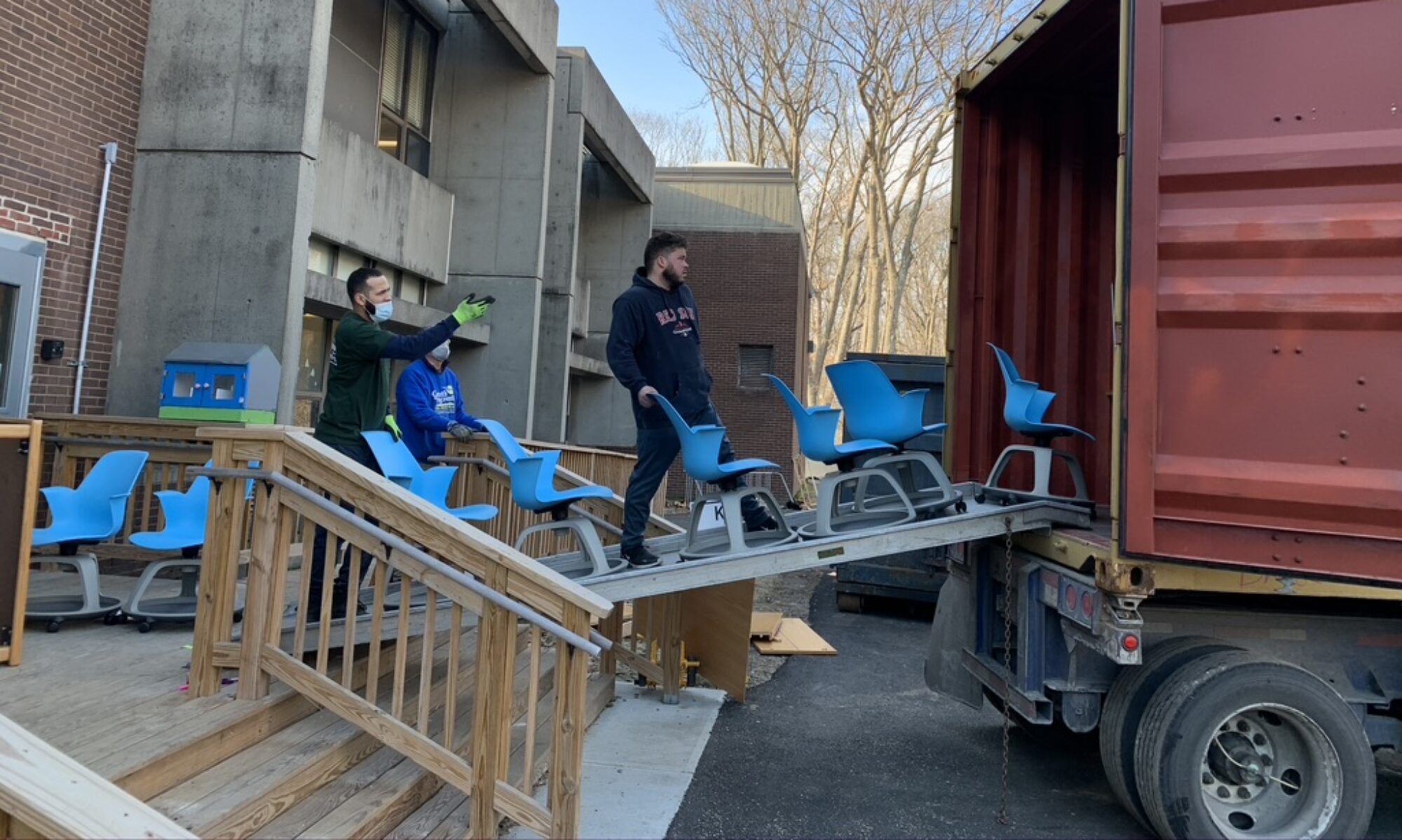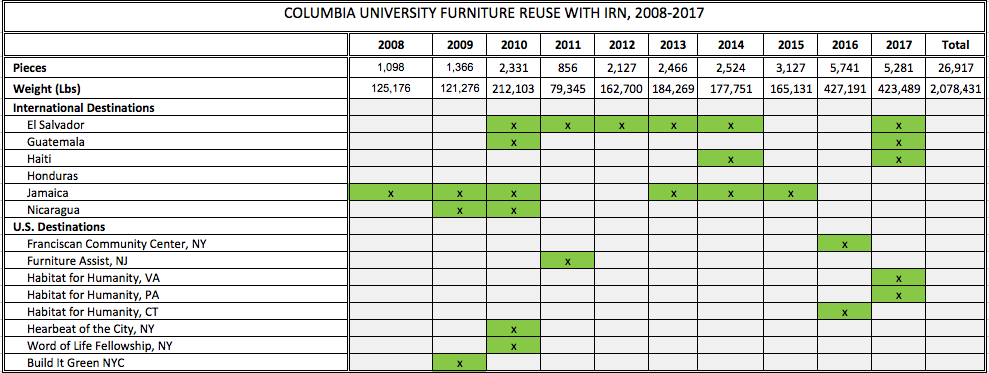 Since 2008, Columbia and IRN have worked together to keep more than two million pounds of furnishings out of the landfill.
Since 2008, Columbia and IRN have worked together to keep more than two million pounds of furnishings out of the landfill.
See more photos of Columbia’s 2017 projects with IRN
We first met Nilda Mesa, head of Columbia’s Sustainability Office, at Greenbuild in 2006. A little over a year later, in early 2008, came our first opportunity to work together, in a renovation of Columbia’s Faculty House. There IRN arranged for the reuse of 167 pieces of kitchen equipment, which were provided to communities in Honduras. Later that year we came back for another 930 items from three Columbia dormitories. The total for 2008: 1,098 items, 125,000 pounds.
Columbia and IRN have worked together every year since then: another 1,350 pieces (121,000 lbs) in 2009, 2,300 pieces (212,000 lbs) in 2010, right on to 4,700 pieces (390,000 lbs) in 2017. Annual totals fluctuate depending on Columbia’s replacement and renovation schedule, but their commitment to reuse remains constant.
IRN’s work with Columbia is only one part of Columbia’s reuse story. IRN handles Columbia’s largest projects, but Columbia has a parallel program for smaller quantities of surplus furniture, matching them with dozens of local nonprofit organizations. Between them, the two programs assure that scarcely a single item of usable furniture is thrown away from Columbia’s campus.
How Columbia Does It
Columbia is not an easy place to move large quantities of furniture. It’s a crowded urban campus in Manhattan. Parking is always an issue. Streets are narrow and many are one-way; sometimes just finding room for a truck to turn a corner is an issue. Many buildings are old, with narrow hallways, small and slow old elevators, or no elevators at all. There are union-labor restrictions; sometimes one crew must bring furnishings out of a building, then another crew loads our trailers.
After eight years, Columbia and IRN have coordination down to an art. Typically Columbia removes the furniture from its installed location before IRN arrives, and stages it inside and/or outdoors. If outdoors, they cover it in plastic if there’s any likelihood of rain. They use school vehicles, traffic cones, crowd-control barriers, lots of orange flagging, and leather lungs to stake their claim to parking. When IRN arrives with tractor trailers, Columbia has a locally hired crew ready to load them. In Manhattan, speed is essential, so Columbia makes sure they have enough men on hand to fill IRN’s trailers quickly and efficiently.
Reuse v Landfill. Comparing Cost and Efficiency
For Columbia, reuse isn’t just a sustainability commitment. It’s the most efficient, most cost-effective way to handle their surplus furnishings:
- Less Traffic, Fewer Delays. Each IRN trailer packed for reuse holds as much as three to four big rolloff containers. So reuse cuts truck traffic by two- thirds, or more. On Manhattan streets, every swap of a rolloff box is a complicated, time-consuming exercise. In contrast, trailers for reuse arrive, park, and then drive away. There’s much less crew down-time.
- A Quicker, Safer Project. Each swap of a rolloff box holds the prospect for a truck getting delayed in traffic. And because haulers have other clients, Columbia sometimes has to wait in line just to get a swap scheduled. IRN’s trailers, on the other hand, are dedicated to Columbia’s use. And unlike throwing furniture into dumpsters, packing trailers is a coordinated, orderly process. So at the same time it’s quicker, reuse gives Columbia a safer, more organized jobsite.
- Lower Cost. Over and above savings in crew time, on a piece-by-piece or pound-by-pound basis reuse costs Columbia much less than disposal. A rolloff of furniture disposed in New York costs an average about $800, and holds an average 3,500 pounds of furniture, for a cost of about $0.23/pound. An IRN trailer packed and dispatched for reuse holds an average 13,000 pounds, and costs Columbia about $0.11/pound.
So Much More Than a Good Idea
Sure, reuse is at the top of the waste management hierarchy. That makes reuse a good idea.
But reuse is much more: Reuse helps real people. In ten years partnering with IRN, Columbia has provided more than 25,000 pieces of furniture that have gone to needy communities. Columbia’s surplus has been distributed to communities in six Caribbean and Central American countries, and to furniture banks, community development agencies, and Habitat for Humanity ReStores across the country. Columbia has shipped over 3,000 beds, more than 3,000 desks, more than 6,000 chairs and other seating, 3,000 dressers and wardrobes, nearly 1,800 bookcases, plus file and storage cabinets, dining tables, kitchen appliances, and much, much more. Every single item is now being used again, by a student or family who didn’t have that piece of furniture before, and couldn’t afford to buy it. Each is now making a difference in the life of a real person, and will continue to do so for years to come.
Please reach us with questions or comments, or to let us know if you have surplus furnishings suitable for reuse.
[contact-form][contact-field label=Name type=’name’ required=’1’/][contact-field label=Email type=’email’ required=’1’/][contact-field label=Question/Comment type=’textarea’ required=’1’/][/contact-form]

